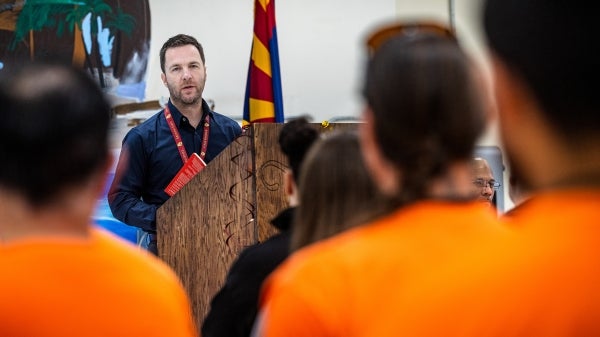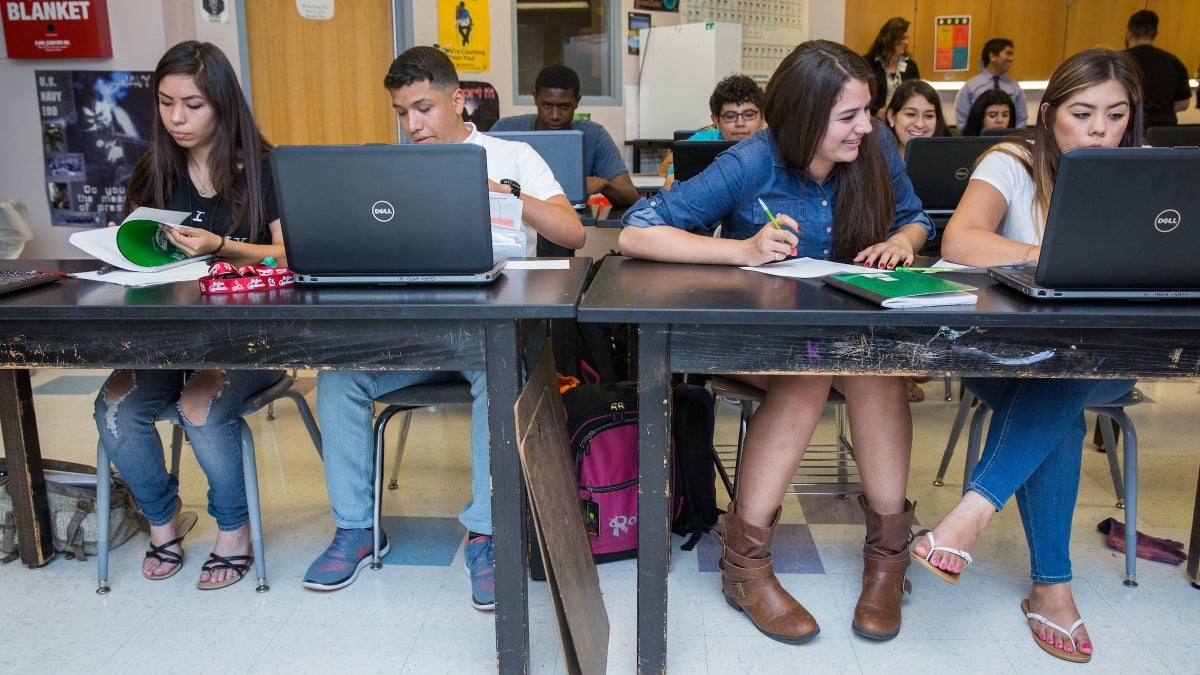Latino students make up the largest racial and ethnic group in Arizona’s public schools but are at an educational and funding disadvantage, according to a new report authored by an Arizona State University professor.
“State of Latino Arizona: Sparking a Community Conversation About School Funding” was written by David Garcia, an assistant professor in the Mary Lou Fulton Teachers College, along with Anabel Aportela, director of research and evaluation for the Center for Student Achievement. The projectASU graduate students Robert Vagl and Larissa Galas assisted. was sponsored by ASU, the Arizona Community Foundation, APS and the Phoenix IDA. The report was released Thursday, Oct. 6.
Public schools with high Latino populations have lower achievement levels and get less in combined state and local funding compared with schools that have lower Latino enrollment, according to the publication, which breaks down Arizona’s complicated school-funding system.
Garcia said the goal was to examine school finance from a Latino perspective.
“The report is very timely because we are starting a conversation, which started with Proposition 123, about school finance in Arizona, and my hope is that we’re going to meaningfully take into account equity as a goal in this state,” Garcia said. Proposition 123 is the measure approved by voters last year that increases the amount of money taken from the state's land trust fund for a decade, and funnels most of it toward public education.
He said that Arizona’s constitution requires that school funding be “general and uniform.”
“That means we work to equalize funding, but equalization is not equity,” he said, noting that schools with Latino students have higher needs.
David Garcia, assistant professor in the Mary Lou Fulton Teachers College
• Latino enrollment in public schools increased by 85 percent from 1998 to 2014 in Arizona. Over the same period, enrollment of all public-school students rose 28 percent. Of the current 1.1 million students, 44 percent are Latino.Among the findings in “State of Latino Arizona”:
• About 38 percent of Hispanic youths age 17 or younger live in poverty, compared with 16 percent of white students and 25 percent of black students.
• State Latino students’ math and reading scores lag behind white students’ scores in the highly regarded National Assessment of Educational Progress. About 34 percent of Arizona Latino high school graduates are eligible for admission to a state university, compared with 46 percent of all high school graduates.
The report analyzes how Arizona’s complicated formula affects districts with high numbers of Latino students. Over the past several years, funding has shifted from state to local sources, primarily to bonds and overrides, in which voters agree to temporarily raise their taxes to funnel more money to schools. But districts with high Latino enrollment typically have lower property values, hindering their capacity to raise more money.
“What surprised me was how low property values are,” Garcia said, noting that big swaths of west Phoenix, which has a high population of Latino families, are mostly housing and have little economic diversity.
Schools with many Latino students do receive more in federal funding, which is targeted to programs for low-income students.
“We’re a state that likes to battle it out with the feds, but for our Latino students, it’s federal funds that allow us to provide those services,” Garcia said.
Another way that schools receive money is tax-credit donations. Donors agree to take some of the money they would normally pay in state taxes and instead give it to a school program. Tax-credit donations are limited to after-school or extracurricular activities, and parents frequently use them to pay fees for their children’s sports, clubs or field trips. Lower-income families have a more difficult time using tax credits because the donation must be paid in a lump sum, according to a school principal quoted in the report.
“Asking parents to donate $400 to help fund field trips or extracurricular activities is asking them to default on their rent or electricity bill, or forgo weekly groceries,” wrote Marci Higuera Koke, principal at I.G. Conchos Elementary School in Phoenix.
Schools with more Latino students reap far less in tax-credit donations. In 2013, schools that were at least 75 percent Latino received an average $12.65 per student in tax-credit donations, while schools with low Latino populations received an average $87 per student.
“What that means is things like chess club or Lego club, extracurricular activities that enrich a student’s educational experience, will simply be less available to our highest-needs areas because their parents don’t have the ability to pay,” Garcia said.
The report is the newest in a series of ASU’s “State of Arizona” projects, with others focusing on Native American, Asian-American, Black and Latino populations in Arizona over the past decade. The most recent Latino report was released in 2009 and analyzed demographic trends.
The new report includes commentary from community leaders. ASU President Michael M. Crow wrote that the state must focus its energy on educational attainment for all.
“Without a cohesive, comprehensive strategy to close the Latino education gap, and the abandonment of ill-conceived education funding strategies that disproportionately affect the Latino community, Arizona risks a future of stagnant average incomes, diminished purchasing power, greater unemployment and poverty, increased demand for public assistance and an uncompetitive economy,” Crow wrote.
Garcia said he hopes “State of Latino Arizona” lives as a document that can spur policy decisions.
“The goal is to try to take something as wonky as school finance and put it out in a way that people learn and hopefully engage,” he said.
Find the report here: https://outreach.asu.edu/sites/default/files/State_of_Latino_AZ_2016.pdf
Top photo: Students at Cesar Chavez High School in Phoenix work in a classroom last year. Photo by Deanna Dent/ASU Now
More Arts, humanities and education
Autism diagnosis leads ASU professor to write book about neurodiversity and literature
Bradley Irish always knew his mind worked differently.But it wasn’t until two years ago that Irish, an associate professor in Arizona State University’s Department of English, discovered why.He was…

ASU professor, Arizona inmate work to rehabilitate the 'imprisoned mind'
An Arizona State University professor has collaborated with an Arizona inmate on a book that examines why investing in healing prisoners would benefit everyone.“Imprisoned Minds: Lost Boys, Trapped…
Illuminating legacy at ASU
In 2020, the ASU Art Museum unveiled a groundbreaking installation, "Point Cloud (ASU)," by renowned artist Leo Villareal. The art piece was given a permanent home on the Tempe campus in 2024 thanks…

